Imagine navigating the intricate waters of financial markets with a compass that reveals hidden currents and unseen paths.
As you consider the 10 best technical indicators in finance, each one acts as a unique beacon, shedding light on market trends and potential opportunities.
But which indicators hold the key to unlocking your trading potential and maximizing your gains?
Explore the nuances and intricacies of these indicators to uncover the strategies that could set you on a path to financial success in the ever-evolving landscape of finance.
Moving Average Indicator (MA)
The Moving Average Indicator (MA) is a crucial tool in the arsenal of traders due to its ability to smooth out price data and provide valuable insights into market trends. As a trend-following indicator, MA helps you identify the current direction of a trend and potential support or resistance levels.
Exponential Moving Average Indicator (EMA)
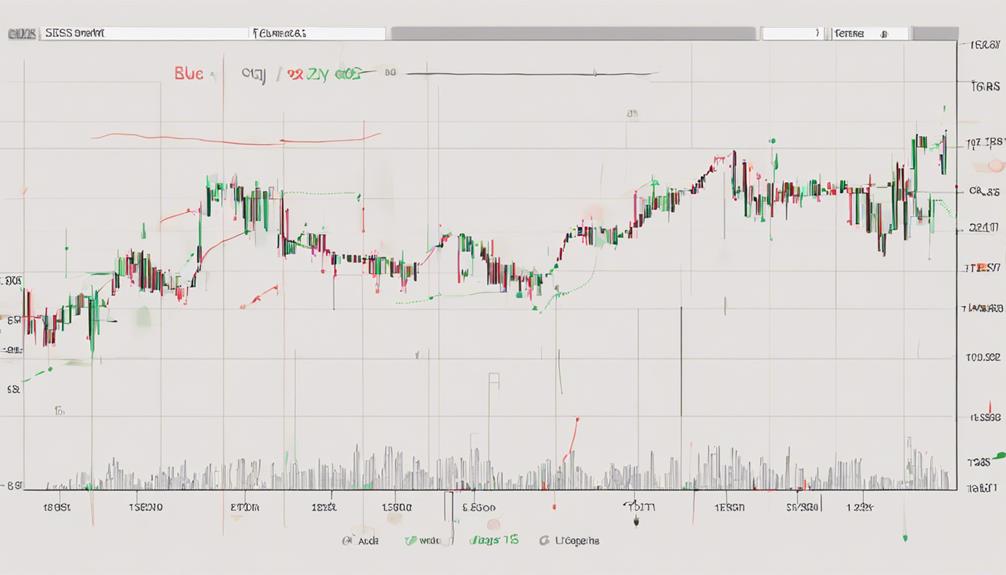
Smooth out price data and gain valuable insights into market trends with the Exponential Moving Average Indicator (EMA), a tool that gives more weight to recent price data compared to the Simple Moving Average (SMA).
Traders often utilize EMA crossovers to identify trend reversals and pinpoint entry/exit points in the market efficiently. Due to its quicker reaction to price changes, EMA is particularly favored for short-term trading strategies where capturing rapid price movements is crucial.
Calculated by incorporating a percentage of the current closing price with the EMA value from the previous day, EMA offers a dynamic approach to analyzing market trends and making informed trading decisions.
- EMA gives more weight to recent price data
- EMA crossovers are used to identify trend reversals
- Popular for short-term trading strategies
Moving Average Convergence Divergence (MACD)
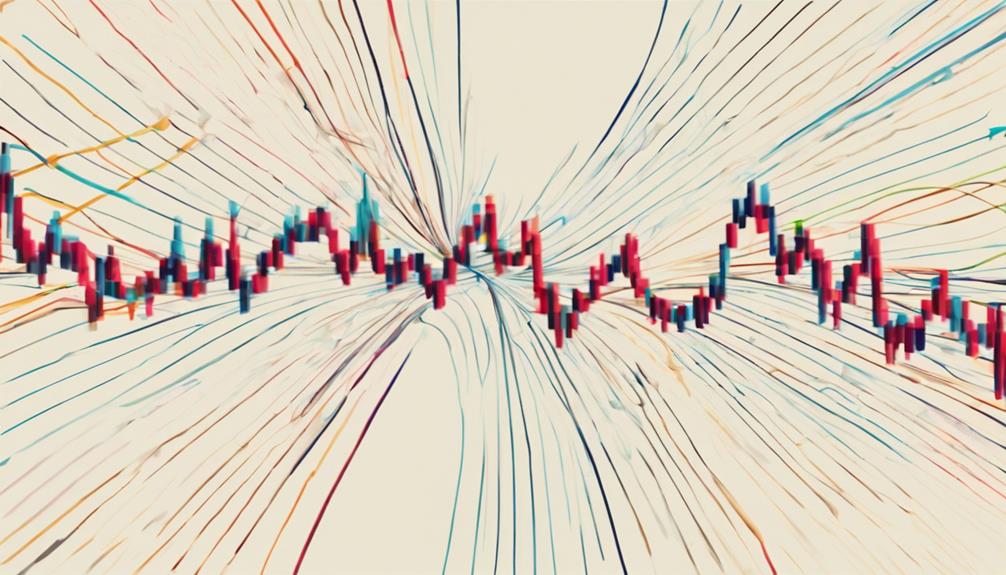
Utilizing two exponential moving averages to generate buy and sell signals, Moving Average Convergence Divergence (MACD) is a widely recognized momentum indicator in the realm of technical analysis.
MACD aids traders in identifying trends by analyzing the relationship between these moving averages, revealing bullish or bearish divergences. This indicator is valuable for determining the strength and direction of a trend, offering insights into potential market reversals.
Traders commonly rely on MACD crossovers and signal line interactions to make well-informed decisions regarding trade entry and exit points. Widely used in technical analysis, MACD serves to confirm price movements and evaluate the momentum of the underlying asset, making it a crucial tool for traders navigating the complexities of financial markets.
Relative Strength Index (RSI)
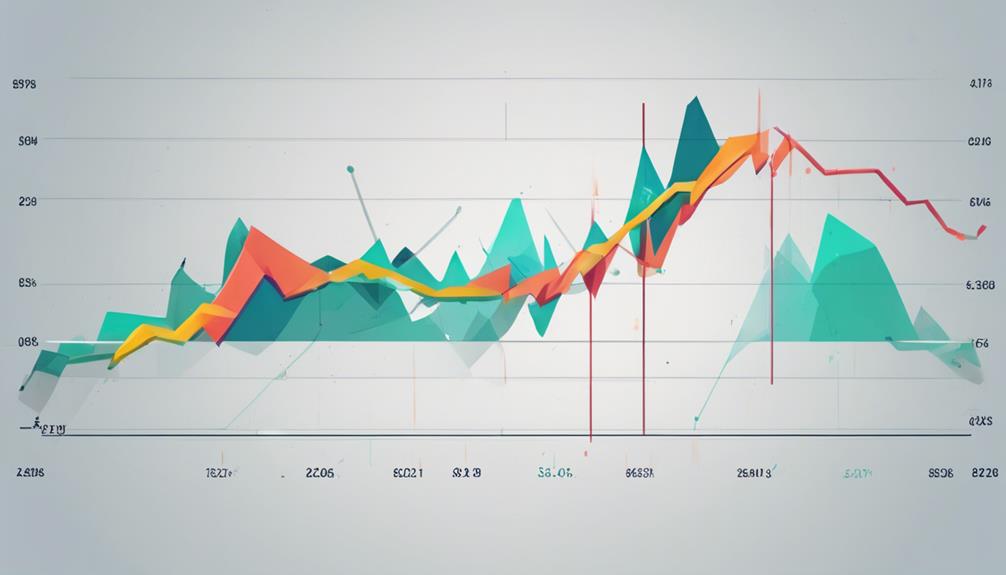
Analyzing price movements and market conditions, Relative Strength Index (RSI) serves as a crucial momentum oscillator for traders seeking to gauge the speed and change of trends in financial assets.
RSI oscillates between 0 and 100, indicating overbought and oversold conditions. Values above 70 suggest overbought conditions, while below 30 indicate oversold conditions.
Traders often use RSI to assess the strength of a trend and identify potential trend reversals based on divergence between price and RSI. RSI is widely used to generate buy or sell signals, making it a popular tool among traders for decision-making.
Percentage Price Oscillator Indicator (PPO)
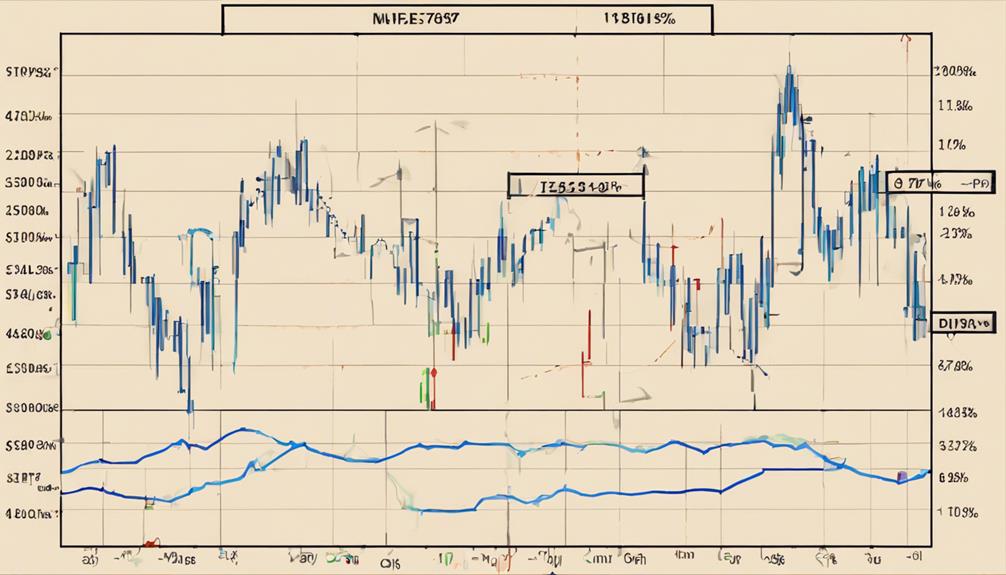
The Percentage Price Oscillator (PPO) serves as a valuable tool for traders seeking to gauge market momentum and potential trend shifts. By calculating the percentage difference between two moving averages, the PPO offers insights into overbought or oversold conditions and helps identify possible entry or exit points.
Comparing the PPO with other indicators like the Moving Average Convergence Divergence (MACD) can provide a more comprehensive analysis of market trends and signals.
PPO Calculation Method
To calculate the Percentage Price Oscillator (PPO), subtract the longer-term exponential moving average (EMA) from the shorter-term EMA, then divide the result by the longer-term EMA and multiply by 100. This formula helps in understanding the relationship between two moving averages and provides insights into potential trend changes.
The PPO calculation method is crucial for traders aiming to gauge momentum and identify possible entry or exit points in the market. Here are some key points to remember:
- PPO is a percentage-based indicator derived from the variance between two EMAs.
- The PPO formula involves mathematical operations like subtraction, division, and multiplication.
- Traders use PPO values to confirm trends and assess the strength of price movements.
Interpreting PPO Signals
By examining PPO signals on a price chart, traders can gain valuable insights into potential market trends and actionable trading opportunities. The Percentage Price Oscillator (PPO) compares two moving averages, providing a momentum oscillator that helps identify potential buy or sell opportunities.
When the PPO line crosses above the signal line, it suggests a potential bullish trend, signaling a buy opportunity. Conversely, a PPO line crossing below the signal line indicates a potential bearish trend, signaling a sell opportunity. Traders utilize PPO signals to confirm trends and spot momentum shifts.
A rising PPO signifies increasing momentum and potential bullish conditions, while a falling PPO indicates weakening momentum and potential bearish trends. Understanding how to interpret these signals can enhance your technical analysis and trading strategies.
PPO Vs MACD Comparison
Comparing the Percentage Price Oscillator (PPO) with the Moving Average Convergence Divergence (MACD) indicator offers traders valuable insights into momentum analysis and trend identification in financial markets.
- PPO calculates the difference between two moving averages as a percentage, providing a clearer comparison than MACD's absolute values.
- PPO's focus on percentages helps traders in assessing the strength of price momentum accurately.
- Understanding the PPO's interpretation of moving averages aids traders in making well-informed decisions based on trend changes and buy/sell signals.
Parabolic SAR Indicator (PSAR)
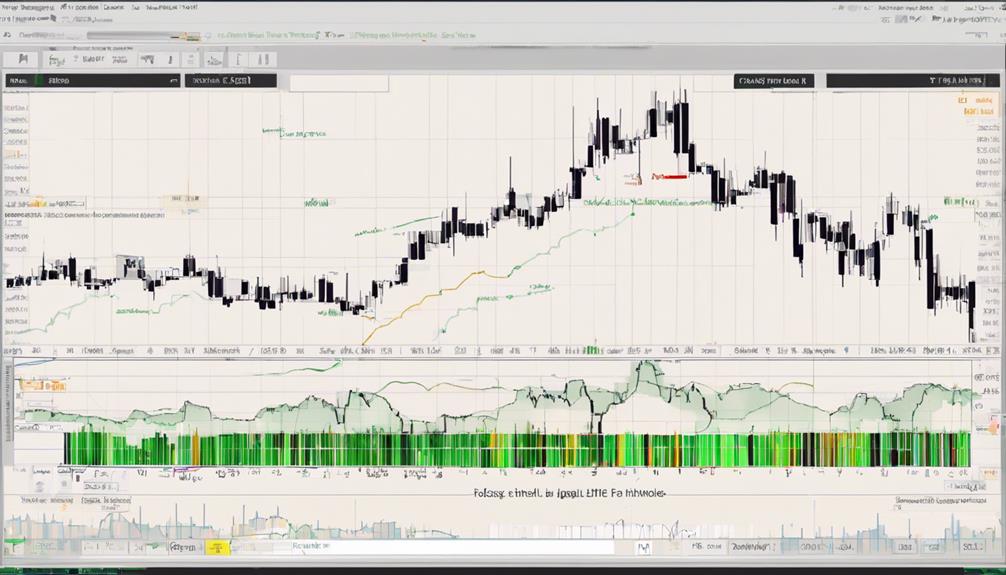
How does the Parabolic SAR (PSAR) Indicator assist traders in identifying potential entry and exit points in the market?
The PSAR is a trend-following indicator that helps traders spot potential trend reversals. It places dots above or below the price chart, signaling changes in the trend when the price intersects these dots.
By considering both price direction and acceleration, the PSAR aids traders in determining optimal stop-loss levels and potential shifts in market trends.
When used alongside other technical indicators, traders can validate signals and make well-informed trading choices. Particularly beneficial in trending markets, the PSAR enables traders to track trend directions effectively and manage risk by setting appropriate stop-loss levels.
Average Directional Index (ADX)
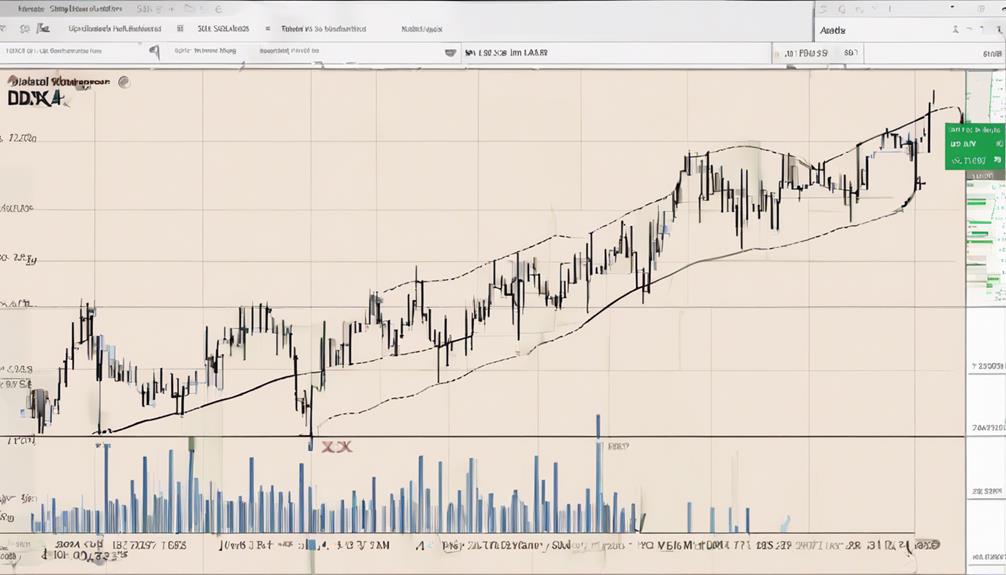
When it comes to the Average Directional Index (ADX), understanding the calculation method is crucial for interpreting its values effectively.
ADX values ranging from 0 to 100 provide key insights into the strength of a market trend.
ADX Calculation Method
The ADX Calculation Method, also known as the Average Directional Index (ADX), involves smoothing true range values using Wilder's smoothing method over a specified period to determine the strength of a trend in financial markets.
- ADX is calculated by averaging the difference between positive and negative directional indicators.
- The ADX values range from 0 to 100, with levels above 25 indicating a strong trend.
- Traders utilize ADX to assess trend strength, with higher values suggesting a more robust trend.
Understanding how ADX is calculated is crucial for interpreting its values effectively and making informed decisions based on the strength of market trends.
Interpreting ADX Values
To effectively gauge market trend strength, understanding how to interpret ADX values is essential in making informed trading decisions. ADX values range from 0 to 100, with levels above 20 indicating a trending market.
Remember, ADX helps assess the strength of a trend, not its direction. A rising ADX signifies a strengthening trend, while a decreasing ADX suggests a weakening trend. Strong trends are typically associated with ADX values above 40, whereas values below 20 may indicate weak trends or ranging markets.
Traders often combine ADX with other indicators to confirm trend strength and optimize trading strategies. By analyzing ADX values diligently, you can enhance your ability to identify the intensity and sustainability of market trends.
ADX Trend Strength
Analyzing the Average Directional Index (ADX) for trend strength provides traders with crucial insights into market momentum and potential trading opportunities. The ADX measures the strength of market trends, distinguishing between trending and ranging markets. Here are three key points to remember about ADX when assessing trend strength:
- ADX values above 25 indicate a strong trend, while values below 20 suggest a weak trend or sideways movement.
- Traders utilize ADX to filter out weaker trends and focus on strong trending markets for potential trading opportunities.
- Although ADX doesn't reveal the trend direction, it helps traders evaluate the strength of the trend. Combining ADX with other indicators can enhance trend confirmation, aiding in making informed trading decisions in volatile market conditions.
Stochastic Oscillator Indicator
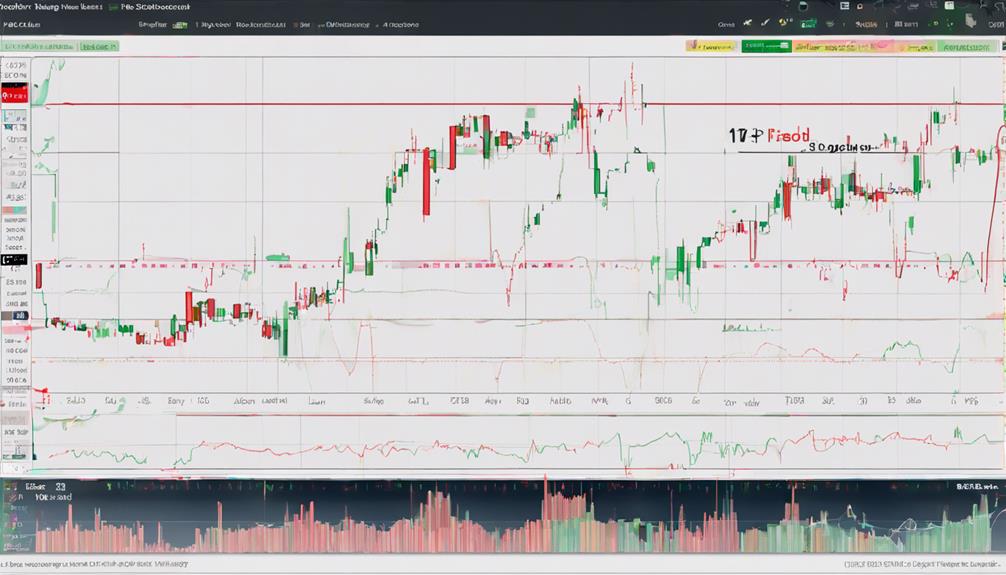
Utilizing the Stochastic Oscillator Indicator in financial analysis provides traders with a valuable tool for identifying market conditions. As a momentum indicator, it compares a security's closing price to its price range over a specific period, aiding in spotting overbought and oversold conditions.
The indicator's range of 0 to 100 helps traders pinpoint potential reversal points, with readings above 80 signaling overbought conditions and readings below 20 indicating oversold conditions. Traders leverage the Stochastic Oscillator to confirm trends, generate buy or sell signals, and anticipate possible trend changes.
Bollinger Bands Indicators
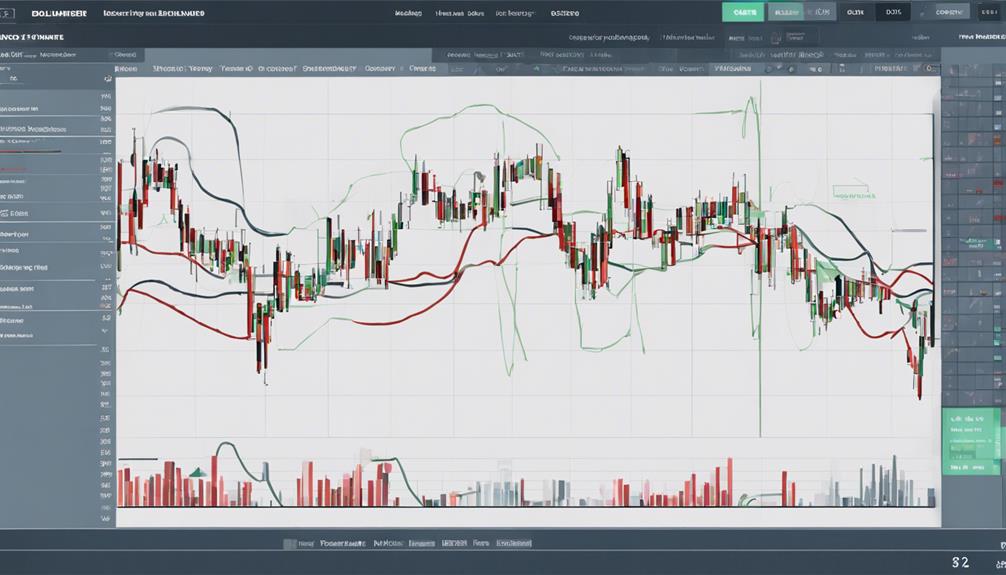
Bollinger Bands, a volatility indicator comprising a simple moving average and two standard deviation bands, offer traders a visual representation of price volatility and potential market reversal points.
- Bollinger Bands are volatility indicators that help traders visualize price volatility and potential price reversal points in the market.
- They tighten during low volatility periods and expand during high volatility periods, indicating potential trading opportunities.
- Prices touching or exceeding the bands may signal overbought or oversold conditions, leading to potential trend reversals.
Traders often use Bollinger Bands alongside other indicators to confirm trends, pinpoint entry and exit points, and manage risk effectively. These bands provide valuable insights into market conditions, aiding traders in making informed decisions.
Standard Deviation Indicator
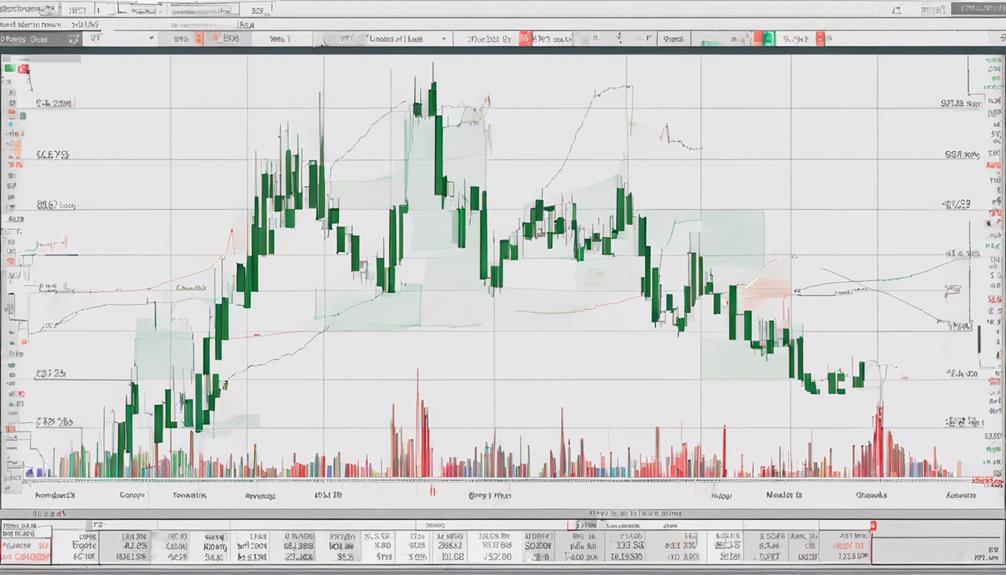
The Standard Deviation Indicator, a key tool in financial analysis, provides traders with crucial insights into asset price volatility and risk assessment. By measuring the dispersion of data points from the mean, this indicator helps assess the volatility and potential risk associated with price fluctuations.
A higher standard deviation signifies greater price volatility, whereas a lower standard deviation indicates more stable price movements. Traders leverage the Standard Deviation Indicator to fine-tune risk management strategies and determine appropriate stop-loss levels.
Understanding this indicator enables traders to predict potential price fluctuations accurately, empowering them to make well-informed decisions when trading in the financial markets. Incorporating the Standard Deviation Indicator into your analytical toolkit can significantly enhance your ability to manage risk effectively.
Can Fundamental Technical Indicators Be Used in Conjunction with Other Technical Indicators in Finance?
Yes, fundamental and technical indicators can be used together to make more informed financial decisions. For newbies, it’s recommended to start with the best technical indicators for newbies such as moving averages, MACD, and RSI. These can be combined with fundamental analysis for a well-rounded approach to trading.
Frequently Asked Questions
What Are the Top 5 Technical Analysis Indicators?
For identifying market trends and potential reversals, consider using Moving Average, Relative Strength Index, Moving Average Convergence Divergence, Bollinger Bands, and Exponential Moving Average. These indicators help analyze price movements and make informed trading decisions.
Which Technical Indicator Is the Most Accurate?
When considering the most accurate technical indicator, the Relative Strength Index (RSI) stands out for its ability to pinpoint overbought and oversold conditions effectively. Its precision in identifying market extremes makes it a top choice for traders.
What Are Technical Indicators in Finance?
Technical indicators in finance are mathematical tools analyzing market data for predicting price trends and making trading decisions. They help traders understand market behavior, identify trends, and spot trading opportunities for informed decisions.
Which Is the Most Predictive Technical Indicator?
The most predictive technical indicator is the Relative Strength Index (RSI), which measures price movements' speed and change to pinpoint overbought or oversold conditions, offering crucial insights for informed trading decisions in finance.
Conclusion
In conclusion, mastering the use of technical indicators in finance can greatly enhance your trading strategy.
For example, by combining the MACD and RSI indicators, you can pinpoint potential entry and exit points with higher accuracy, leading to more profitable trades.
Understanding how these indicators work together can give you a competitive edge in the financial markets and help you achieve your trading goals effectively.
Keep honing your skills and stay ahead of the game.
